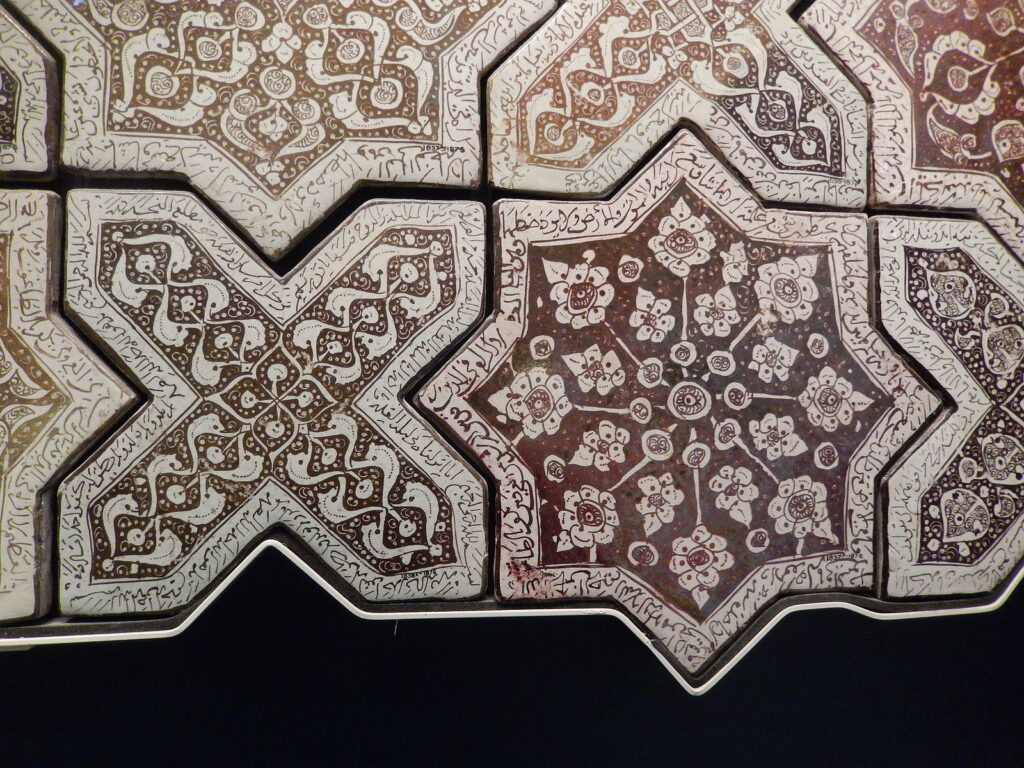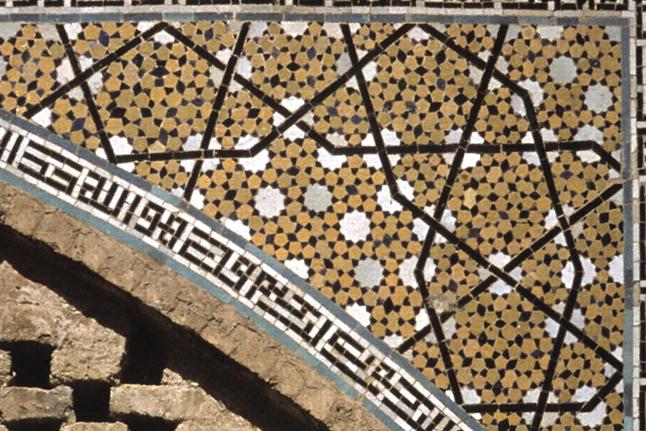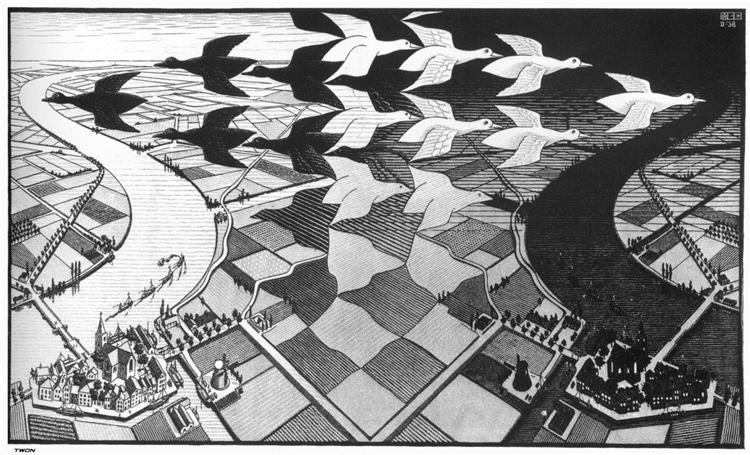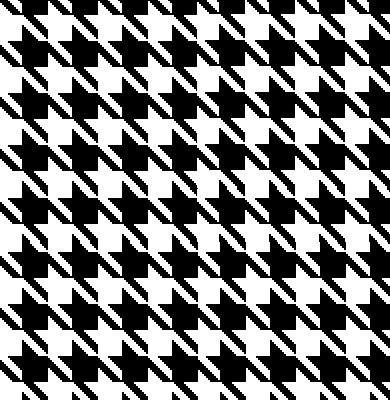Tessellation stands as a mesmerizing marriage between mathematical precision and artistic expression. It highlights the humanistic use of a field typically relegated to its more scientific uses.
Tessellation art is defined by the repetition of geometric shapes to fill a surface with no gaps or overlaps. It captivates viewers with its intricate patterns, symmetrical arrangements, and endless possibilities.
It turns complex mathematics into beautiful and entrancing works of art that answer the evergreen question asked by students everywhere: “when will I use this?”

Principles of Tessellation
Although the name “tessellation” may not be widely known, nearly everyone in the world has encountered a form of tessellation art at some point.
At its core, tessellation art relies on the repetition of simple geometric shapes – such as squares, triangles, and hexagons – to create complex and visually striking patterns.
The key principle is that the shapes must fit together seamlessly, with no gaps or overlaps, to cover a surface completely. This requires careful planning and precision to ensure that the shapes align perfectly and create a harmonious composition.
Similar to fractals, another mathematical pattern based on an endlessly repeating pattern, tessellations create a satisfying pattern that is seemingly perfect, almost surreal, or divine in its flawless form.

Origins and History
The origins of tessellation art can be traced back to ancient civilizations. This was long before mathematicians were able to rationalize the beauty present in the endless, repeating patterns.
The word “tessellation” is derived from Latin, with the word tessera meaning a small, tile-like stone, the sort of which can be found in many Roman mosaic pieces. Many other civilizations also have ancestral art with where geometric patterns adorned everything from architecture to textiles.
In Islamic art, intricate tessellations of polygons, stars, and floral motifs adorned mosques and palaces. These showcased the mastery of geometry and craftsmanship. Some Islamic beliefs forbid the portrayal of living things in art, so tessellations became a common alternative that still captured the beauty and complexity of the world.
Similarly, Mexican folk art features repeating shapes adorning clothing, buildings, and massive artworks that are distinctive to the region.
M.C. Escher, a Dutch artist, popularized tessellation art in the Western world in the 20th century. He created mind-bending drawings that explored concepts of symmetry, infinity, and metamorphosis, demonstrating the beauty of emerging scientific theories through timeless artworks.

Techniques and Approaches
Tessellation art can be created using a variety of techniques and approaches. In traditional media, artists often start by sketching out a basic grid or framework, then fill in the shapes with intricate patterns and designs.
As long as the pattern repeats and fills the space, it can be any shape. Artists have created intriguing original patterns, including various animals overlapping.
This process requires a keen eye for detail and a steady hand to achieve precise and uniform results. Hand-crafted tessellation art is painstakingly created with immense skill and time, resulting in gorgeous patterns.
In recent years, the advent of digital art programs has made tessellation art easier than ever. Artists can use software such as Adobe Illustrator or Mathematica to create complex tessellations with ease.
These programs offer a range of tools and features that allow artists to experiment with different shapes, colors, and arrangements. This enables them to explore new avenues of creativity and push the boundaries of traditional tessellation art.
As computational machines, computers are capable of manufacturing incredibly complex and detailed works of tessellation art in seconds. It opens a bridge between the complexity of mathematics and the beauty of art for those with the knowledge and skill to keep one foot in each field.
Applications and Uses
Tessellation art finds applications in various fields, including architecture, design, and education. In architecture, tessellated patterns can be found in the facades of buildings, the layout of floor tiles, and the design of decorative elements.
These patterns not only add visual interest but also serve functional purposes, such as improving acoustics or enhancing airflow. Tessellation patterns in flooring can also guide people through a room, assisting in the flow of traffic without any extraneous controlling factors.
In design, tessellation art is used in a wide range of products and industries, from textiles and fashion to packaging and branding.
The repetitive nature of tessellated patterns lends itself well to product design. It allows for the creation of visually striking and cohesive designs that can be applied to a variety of surfaces and materials.
Popular patterns, such as houndstooth, commonly adorn professional clothing and have become so commonplace that their existence as tessellation art is lost upon most who view them.

Inspiration and Exploration
One of the most exciting aspects of tessellation art is the endless possibilities for exploration and experimentation. Artists can draw inspiration from nature, mathematics, architecture, and culture to create unique and innovative tessellated patterns that reflect their personal style and vision.
Whether exploring symmetrical arrangements, fractal patterns, or optical illusions, tessellation art offers a rich and fertile ground for creative exploration. With digital media tools, the world of art has opened up to anyone with a creative spark.
Tessellations offer a complex and satisfying method of creating entrancing work, resulting in highly original patterns that were never considered before.
Conclusion
Tessellation stands as a testament to the beauty of geometry, symmetry, and repetition. From ancient civilizations to modern-day artists, tessellation art has captivated audiences with its mesmerizing patterns, intricate designs, and mathematical precision.
No matter the medium of the pattern, tessellation art continues to inspire and delight viewers with its endless possibilities and boundless creativity. The marriage of scientific order and aesthetic symmetry are a constant reminder of the bridge between art and mathematics.
It’s an art that unites two fields that often are separated by their nature.
References
Meyer, Isabella. “Tessellation Art – A Guide to the Art of Tessellation Patterns.” Art in Context, November 25, 2021. https://artincontext.org/tessellation-art/.
Taggart, Emma. “Take a Tour of Tessellations, the Mathematical Art of Repeating Patterns.”
My Modern Met, September 18, 2021. https://mymodernmet.com/tessellation-art/.